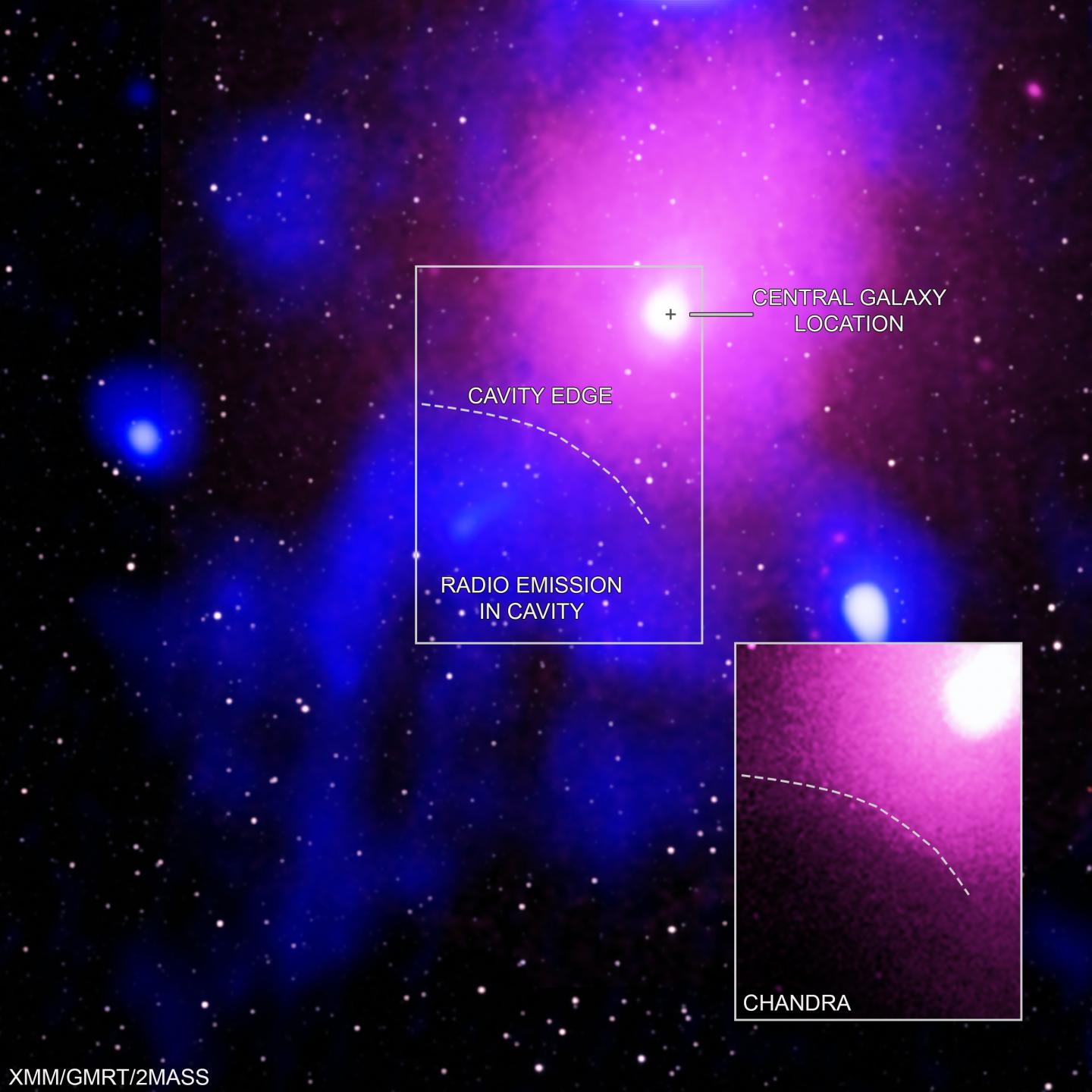Astronomers have detected the fallout of the biggest known explosion in the universe since it was born more than 13 billion years ago.
The epic blast was unleashed by a supermassive black hole in the Ophiuchus galaxy cluster, located nearly 400 million light years from Earth, according to a study published on Thursday in The Astrophysical Journal.
"We've seen outbursts in the centres of galaxies before but this one is really, really massive," said study co-author Melanie Johnston-Hollitt, an astrophysicist at the Curtin Institute of Radio Astronomy, in a statement. "And we don't know why it's so big.”
The explosion was five times more massive than the previous title-holder of the universe’s biggest outburst, which occurred in the galaxy cluster MS 0735+74. But unlike the Big Bang, a near-instantaneous expansion from which the universe originated, the Ophiuchus cluster explosion was a slow burn that raged for hundreds of millions of years.
The eruption was caused by an active galactic nucleus (AGN), which is the term for the central region of a galaxy during energetic phases that are notable for their powerful flares and intense emissions of radiation. The supermassive black hole at the center of the Milky Way, for instance, is currently dormant, though it has been an AGN in the past.

The outburst blew out a colossal hole in the plasma surrounding the black hole, creating a “giant radio fossil” in the cluster. Scientists have observed this cavity for years, but they were puzzled about its origins due to its unprecedented scale.
"People were skeptical because of the size of outburst,” Johnston-Hollitt noted. "But it really is that. The universe is a weird place."
Johnston-Hollitt and her colleagues confirmed that the cavity is “a very aged fossil of the most powerful AGN outburst seen in any galaxy cluster,” as the study calls it. The team’s conclusion is based on multiwavelength observations from two space telescopes, NASA's Chandra X-ray Observatory and the European Space Agency's XMM-Newton, as well as two ground radio observatories, the Murchison Widefield Array in Australia and the Giant Metrewave Radio Telescope in India.
In particular, the radio observations helped to reveal the odd features at Ophiuchus as the work of an AGN explosion. Over the coming decades, radio telescopes are expected to become much larger and more sensitive, so this may not be the last time the record for the biggest cosmic explosion is blasted away by a new discovery.
"We've been given the tools to dig deeper with low frequency radio telescopes so we should be able to find more outbursts like this now," Johnston-Hollitt said. "I think that's pretty exciting."
from VICE https://ift.tt/2uACCCF
via cheap web hosting
No comments:
Post a Comment